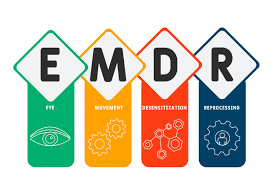
Responding to the Government’s “Keep Britain Working” Final Report
The UK Government’s Keep Britain Working report (published November 2025) highlights a critical national issue: more than one in five working-age adults are now out of work and not looking for employment, a figure which is largely driven by health-related challenges.
The report calls for a fundamental shift: from a system that reacts once people have already left work, to one that supports people to stay well, stay in work, and return well after illness or difficulty.
At Wellbeing Therapy Solutions in Leicester, we believe occupational therapists (OTs) have a vital role to play in achieving this goal, supporting both individuals and organisations to create healthy, inclusive workplaces where everyone can thrive.
A Healthy Working Lifecycle
The report introduces the concept of a Healthy Working Lifecycle , a joined-up approach spanning recruitment, being healthy in work, managing ill health, returning to work, and re-employment after leaving.
It recognises that long absences make returning to work much harder, and that early, supportive action benefits individuals, employers, and the wider economy.
Occupational therapy is uniquely placed to deliver this kind of practical, early intervention. Our work focuses on helping people understand how their mental health, physical health, or neurodivergence affects their ability to participate in work and what changes can make work both sustainable and fulfilling.
Early, Person-Centred Intervention
Too often, support comes too late.
At WTS, our occupational therapists can help people before absence becomes prolonged or wellbeing deteriorates further. We support individuals to recognise and communciate their challenges, build coping strategies, and explore workplace adjustments that make a difference.
We also partner with employers and managers to create open, psychologically safe spaces for conversation. Many employees fear disclosing health or neurodivergent needs, while managers fear “getting it wrong.” Our work helps to bridge that gap, building confidence and understanding on both sides.
Stay-in-Work and Return-to-Work Planning
When people experience poor mental health, burnout, or neurodivergent overwhelm, work can quickly become unsustainable.
We work with people to design individualised stay-in-work and return-to-work plans — addressing workload, duties, environment, communication and support.
For those returning after time away, we can create phased return frameworks that balance recovery with reintegration. These plans don’t just focus on “getting back”, they focus on staying well, building confidence, and preventing relapse.
Supporting Neurodivergent Employees
The report also recognises the barriers faced by neurodivergent individuals. Challenges like sensory overload, communication differences, or executive functioning differences can make traditional workplaces inaccessible.
Our occupational therapy team works with both the individual and their employer to identify strengths and barriers. We take a strengths-based approach, helping people harness what they do best; creativity, pattern recognition, problem-solving, while developing strategies and environmental changes that make daily work tasks easier and more sustainable.
We also provide neurodiversity training and workplace assessments to support employers in creating environments where neurodivergent colleagues can thrive.
Partnering with Employers for Sustainable Change
The report calls for a stronger partnership between health professionals, individuals, and employers.
This is exactly where WTS adds value.
We act as the bridge, facilitating conversations, providing clear recommendations, and helping organisations implement sustainable, evidence-based adjustments.
Building Workplaces Where Health and Work Go Hand in Hand
At Wellbeing Therapy Solutions, we are passionate about helping people stay well, stay connected, and stay in work — and ensuring that returning to work after illness or difficulty is safe, supported, and successful.
If your organisation is looking to align with the report’s recommendations, our occupational therapy team can help you:
- Develop early intervention pathways
- Create inclusive environments for neurodivergent and mentally healthy workplaces
- Support employees through stay-in-work or return-to-work planning
- Equip managers with practical, compassionate strategies
To explore how Wellbeing Therapy Solutions can support your workplace wellbeing strategy, get in touch with us today.
👉 wellbeingtherapysolutions.co.uk
You can read the full report here: Keep Britain Working – Final Report (GOV.UK)










